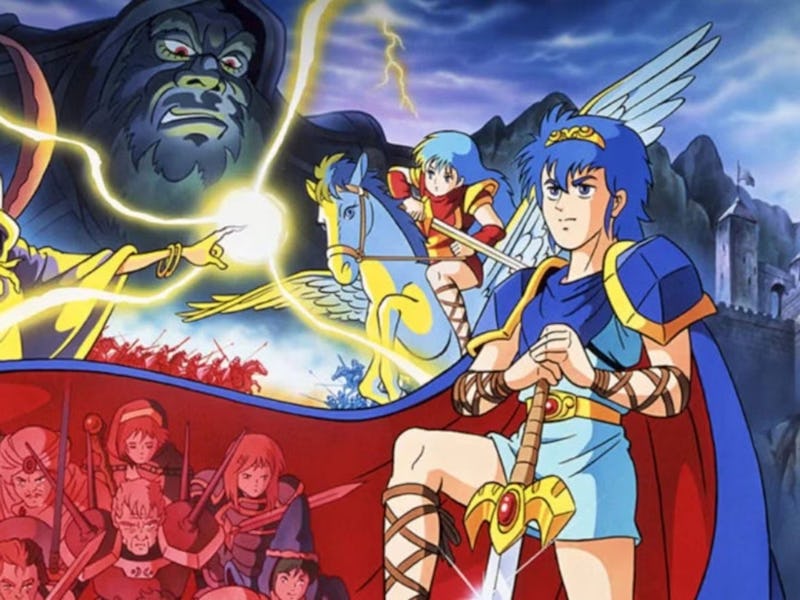
The brand Nintendo obviously conjures up images of pink puffballs and mustachioed plumbers, but there’s another dark horse franchise that’s quietly chugged along the last three decades — and it might actually be Nintendo’s most innovative franchise. Thirty-five years ago, Nintendo invented the tactical RPG with Fire Emblem: Shadow Dragon and the Blade of Light. And ever since then, countless others have been looking to the Fire Emblem formula for inspiration — from tactical spinoffs of The Lord of the Rings, to ambitious indie projects. Fire Emblem has had a profound influence over the years, and it’s a testament to how revolutionary that first game was.
In Fire Emblem, you follow the story of Marth, the young prince of the Kingdom of Altea. One hundred years ago, the continent of Archanea was invaded by the Dohlr Empire, and a young man from Altea had to take up the legendary sword Falchion and defeat the Shadow Dragon Medeus — restoring peace to the continent. Now in modern times, Altea is betrayed by its allies, and Marth’s father is murdered, leaving him to build an army from scratch to try and retake his homeland.
Fire Emblem was one of the early titles that helped define grid-based tactics games.
The narrative of the first Fire Emblem might pale in comparison to modern standards, and where the series has gone — but at the time it was a gripping tale of conflict and heroism. While it's a fairly stereotypical good versus evil story, it’s the characters that really make Fire Emblem pop, and how they tie into both its ambitious gameplay systems and narrative.
Fire Emblem’s big achievement was pushing strategy in a whole new direction by combining it with the core ideas of a party-based RPG. Up until this point, strategy games had mostly focused on producing mass amounts of units, faceless grunts aiding your conquest. But that wasn’t the case in Fire Emblem, as every single unit was unique with their very own stories. While some of these characters join you automatically, many have to be recruited during battles by meeting specific conditions or talking to them with the right character, giving the experience a dynamic feel of actually building your army.
This integrally gives you real attachment to your characters, which makes it all the more harrowing when they fall in battle and are quite literally gone forever. Fire Emblem has permadeath, which makes your strategic choices feel vitally important. Are you willing to put your favorite unit in danger to try and complete a map, or do you play it safe and take things slow?
There are 52 characters to recruit in Fire Emblem, and each one has a unique personality and story.
Fire Emblem wasn’t the first grid-based tactics game, it was one of the games that helped cement the way that entire genre of games would play from then on. While not quite as complex as other strategy games, Fire Emblem’s focus is on having a satisfying loop and providing a real sense of satisfaction with its progression. That’s in large part due to its leveling system, with each level a character gains made to feel like a big event — with a little jingle that plays and a stat screen that clearly lays out how your character has improved. This is made even more satisfying by the Class system, letting you turn characters into far more powerful versions of their class by using certain items.
The sense of progression and your army growing stronger is the crux of what makes Fire Emblem games so compelling, but there’s an extra layer added to the strategy with how units gain experience. Every time a unit fights, they gain XP, and more if they defeat an enemy. But because you progress through the story in set maps, your choices on which units you use and when become absolutely vital. If you really want to invest in a character, you need to use them often and build experience, but you also don’t want to become overly reliant on a single character and have an under-leveled army. That means there’s a brilliant extra layer of strategy across the entire game — forcing players to not just think about the map they’re on, but the bigger picture of the entire game.
Fire Emblem used gorgeous sprite art to make its battles feel more cinematic.
More than anything, Fire Emblem made the tactical strategy experience feel more intimate than ever. It feels like you have a real stake in the epic story playing, by giving you a direct attachment to the characters you’re controlling. The franchise has obviously grown in leaps and bounds in three decades, but the core foundation set by Shadow Dragon is still used to this day.
While Fire Emblem has had its rough patches, it’s proven to be one of Nintendo’s most enduring franchises. Looking back, it’s clear that that’s in large part thanks to the ingenuity and inventiveness that’s been a core part of Fire Emblem since the very beginning. It’s what helps the series stand up amongst other greats, like Kirby and Mario.